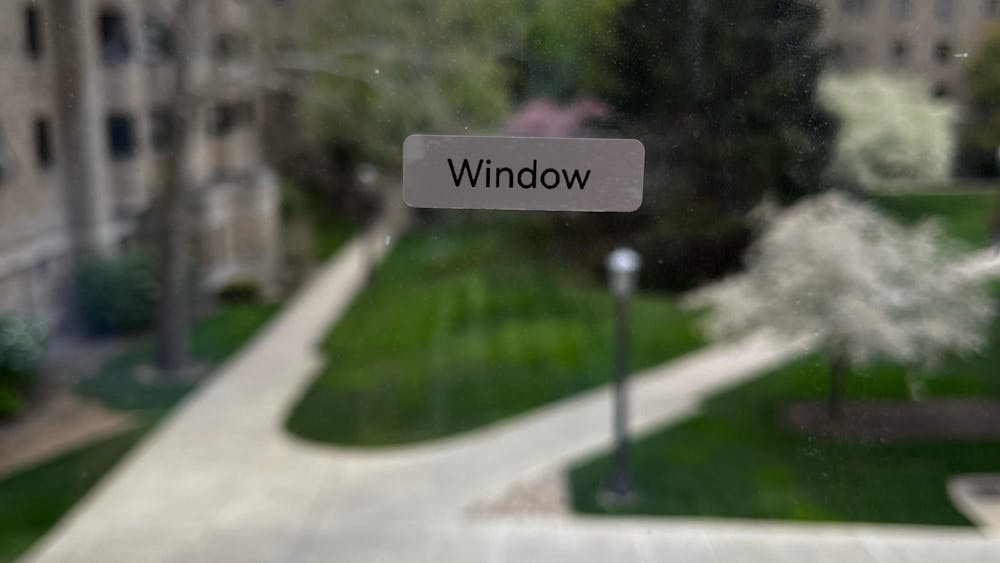In August 2016, I began college at Notre Dame. I lived through the ups and downs that everyone else did: first bad grade, first quarter dog, the 2016 football season and a Midwest winter (OK Chicago people, I don’t care if it was a “mild winter.” Humidity is killer). I also experienced true loneliness, exhaustion and uncertainty, but eventually found comfort in some of the closest friendships I’ve ever had. I can say without a doubt that that year was the most formative and rewarding year of my life so far. And at the end of that wonderful year, instead of making grandiose plans with roommates and scheduling classes for next year, I finalized my transfer out of the University of Notre Dame.
College costs across the nation have risen dramatically, and Notre Dame has followed this trend enthusiastically. As many students (or their parents) know, the estimated cost for the 2017–18 school year is $69,395, with annual increases anticipated. This does not include the financial aid most students receive, and I freely admit that a Notre Dame education is extremely valuable. And again, this is part of a nationwide trend; universities with similar statistics have similar prices.
But isn’t Notre Dame, a Catholic university, supposed to be different? One of the many invaluable lessons we learn in Moreau is that education should not be focused around money. That being true, I believe Notre Dame is being fiscally irresponsible. I don’t believe it can or should slash its prices to the level they were at decades ago; doing so would unavoidably result in a lower-quality education. Additionally, although the financial aid allocation system is problematic (especially for large families), this is not the place to break it down. Recent spending, however, has been undeniably extravagant.
For an obvious example, take Campus Crossroads, which has a predicted final cost of $400 million. Let’s make that more meaningful. For someone graduating in 2020, the year I would have, the average total cost of a Notre Dame degree (including financial aid) can be estimated at $115,000. Thus, if all the money for Crossroads had been spent on scholarships, 3,478 students could have had their educations completely funded.
Unfortunately, Crossroads is just one part of a culture of constant spending. A Huffington Post article estimates that the cost of the gold in Notre Dame’s iconic football helmets could be as high as $700,000 per year. At the price above, that artistic touch is equal to six students’ educations each year. The video board, architecture building and geothermal project are much more expensive purchases. Recent announcements included plans for a $66 million art museum (in addition to the Snite) and two new dorms.
I don’t think I am being unreasonable or undervaluing Notre Dame. I believe it offers one of the best educations in the country, and I tried almost everything to stay. But even if I had worked and gone deeply into debt, my parents would have been forced to take chunks out of their retirement savings and I would have to live with the knowledge that my education was making it almost impossible for my younger siblings to attend a school of the same caliber. I am definitely not alone; more qualified and devoted students with similar situations are appallingly common, although most go quietly to their second options.
For examples, simply look through College Confidential or other forums. I know at least one of my friends at Notre Dame has a younger sibling who will not be attending purely because of cost. My roommate at my new school, also a transfer student, happens to be a lifelong Notre Dame fan. He was accepted, but chose to go elsewhere largely because of the cost. He has often wondered about that decision since then. I was fortunate to spend a year at Notre Dame and to end up at a second-choice school I am happy with. Many students are denied both.
With its reputation and loyal fanbase, Notre Dame could probably continue increasing its tuition and spending for longer than most universities. However, it has an opportunity and a responsibility to be an example of the applied morality it preaches. In a recent Money magazine list of best value colleges, Notre Dame is ranked, but below Michigan, Michigan State, Purdue and 36 other colleges. The only reason is that Notre Dame’s average net cost is higher than every single university in the top 50, including Ivy Leagues. Was a $400 million expansion really essential? Couldn’t a $200 million project suffice? Is one art museum not enough? Especially with Notre Dame receiving incredibly generous gifts like the Ricci family’s $100 million commitment, the constantly increasing financial burden on students is inexcusable. I don’t expect an easy solution, but we must recognize a problem when one of the nation’s wealthiest universities forces teenagers to choose between their education and their family’s financial security.
Declan Kerwin
former Notre Dame student
Jan. 2













